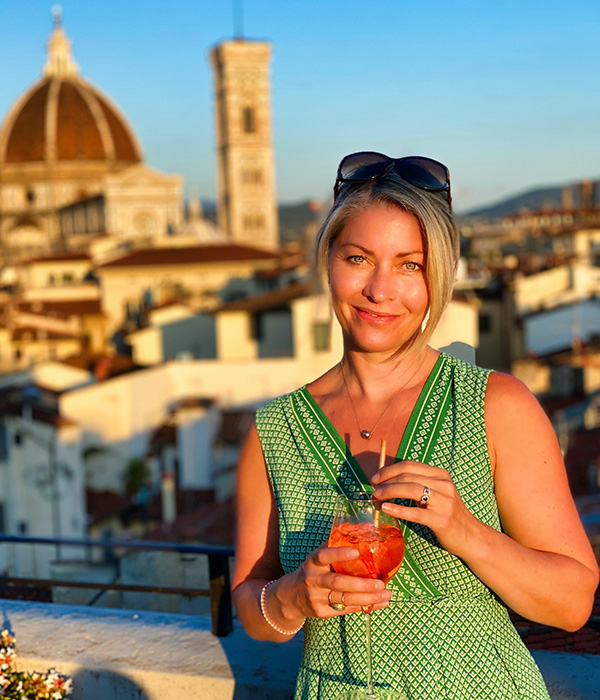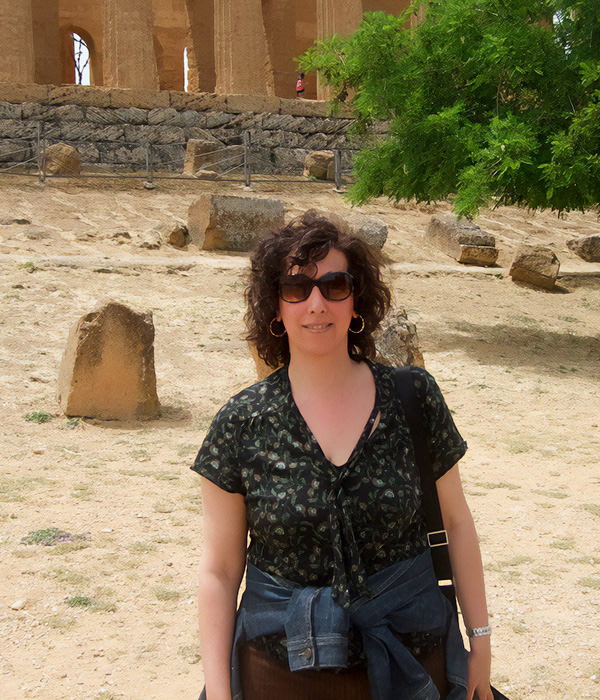Discover the taste of Spain
Spain is an alluring country full of with stunning nature, beautiful beaches, fascinating culture and history, world-class cuisine, striking architecture and cosmopolitan cities. This country on the Iberian peninsula offers visitors a break from everyday life with its laid-back and convivial atmosphere made better by its friendly and easygoing people!
Explore Spain by clicking on a region











Spain at a glance
WHY GO
- While it may be known for its fabulous weather and gorgeous beaches, Spain is a country of diverse landscapes – it is both one of the sunniest and most mountainous countries in Europe! From the dramatic, imposing mountains to the countless glistening beaches and hidden alcoves that dot its 5,000 miles of coastline, Spain is a country full of natural beauty and awe-inspiring landscapes. There are not many places in the world where you can lounge on a beautiful beach in the morning and enjoy an afternoon skiing on the slopes! La Concha beach in the chic coastal city of San Sebastian is one of the best city beaches in Europe, with its golden sand, blue waters and sophisticated promenade. The dreamy seaside town of Sitges is only 25 miles away from Barcelona, and is home to several beautiful white sand beaches, perfect for a day of fun in the sun. The glamorous city of Marbella is a playground for the rich and famous for good reason! It offers many stunning beaches full of charm, golden sand and fantastic facilities.
- One of Spain’s main attractions is the individuality of its cities and villages. Historical buildings, character-filled streets and stunning architecture permeates the country. A photographer’s paradise, each street is more enchanting than the last. Spain is brimming with wonderful architecture that embraces its rich history and pioneering modernism, from Antoni Gaudi’s surreal designs in Barcelona and Seville’s Gothic Cathedral to Frank Gehry’s archetypal Guggenheim Museum in Bilbao and the illustrious Baroque buildings of Madrid. Spain’s charming whitewashed villages and towns scattered around the craggy hillsides of Andalusia are no less stunning though!
- Once the most powerful country in the world, Spain revels in its prestigious past. Spain has a rich heritage, from Roman legions to a powerful caliphate. Observing history throughout Spain is inescapable due to its castles, museums, and architecture that depict its fascinating Roman, Moorish and Gothic history. Spain is overflowing with some of the world’s most captivating historical sites. Visit Cordoba’s spectacular Moorish mosque, the amazing ancient cave paintings in Altamira, the monumental Roman Aqueduct and medieval Alcázar fortress in Segovia, or the breathtaking Moorish Alhambra Palace and Fortress complex in Grenada.
- Spain is home to some of the most interesting and cosmopolitan cities in the world. Located in the captivating region of Catalonia on the sun-soaked coastline of the Costa Brava, Barcelona is a vibrant city with wonderful museums, bustling markets, fantastic gastronomy, luxurious beaches and a bohemian atmosphere. Its jaw dropping architecture like Antoni Gaudi’s impressive and surreal constructions starkly contracts with its enchanting ancient Gothic Quarter. Spain’s capital, Madrid, embodies the country’s unique marriage of old and new with its medieval mansions and Baroque masterpieces sitting alongside contemporary Spanish architecture. Madrid features several world-renowned art museums, amazing restaurants and an incomparable bustling nightlife scene. Seville is another remarkable Spanish city, located in the romantic region of Andalusia. Famed for its picturesque medieval lanes, grand Gothic cathedral and spectacular Moorish castle, this romantic city offers travelers a rich cultural experience with its authentic tapas bars and passion for flamenco.
- Spain has been one of the cultural centers of Europe for thousands of years. Each of the country’s 17 autonomous regions features its own unique atmosphere, history, culture and sometimes even language. Flamenco music and dancing is an important Spanish art form, particularly in the Andalusia region. While in Spain, be sure to witness the immense passion and spirit of the country with a traditional flamenco show! Another important cultural element in Spain are its festivals. Seemingly every town has its own distinctive festivals that range from the religious to the unique, like the traditional running of the bulls in Pamplona and La Tomatina, the tomato-throwing party in Valencia. While every country has museums, Spain’s are particularly exceptional, which you might expect from the birthplace of Pablo Picasso and Salvador Dali. Art plays an essential role in the history and culture of the nation, reflected in its multitude of spectacular museums across the country. Art aficionados should be sure to visit the Museo del Prado and Reina Sofia in Madrid, Guggenheim Museum in Bilbao and the Picasso Museum in Barcelona.
- From traditional tapas bars (tapas are small appetizers or snacks) to avant-garde molecular gastronomy, Spanish cuisine is sure to please even the most demanding palette. Spain has some of the best restaurants in the world as well as the oldest – Casa Botín, operating since 1725. While Spain’s gastronomy varies from region to region, Spanish food is known for being delicious, healthy and full of flavor. Foodies should be sure to savor an authentic tortilla Española (Spanish omelet) in Madrid, refreshing bowl of gazpacho (cold tomato soup) in Seville, fresh paella mixta (rice dish with seafood) in Valencia, delectable Jamón Ibérico (Iberico ham) in Granada and a scrumptious crema Catalana (caramelized custard) in Barcelona. To go with all the delicious food, enjoy an authentic a cold glass of Tinto Verano in the summer time (a red wine cocktail mixed with soda), hearty Rioja or a spicy Grenache followed by an after dinner glass of dry sherry.
WHEN TO GO
- Spain is blessed with an ideal Mediterranean climate throughout most of the country. Barcelona and the region of Catalonia in the northeast enjoy especially mild weather. Southern Spain is naturally the sunniest part of the country, and the Costa del Sol is a sun-worshipper’s dream destination.
- With its position in southern Europe, Spain enjoys long summers and pleasant year-round weather, making it an ideal destination if you want to catch come rays.
- The weather varies greatly, depending on what part of the country you are visiting.
- Late spring, summer and early fall are the best times to take a beach vacation in Spain. August is the most crowded time at Spain’s beach resorts, where many Europeans take their summer holidays.
- When planning a trip, it’s wise to consider the Spanish holidays, as many sites are closed during religious holidays. However, Spain’s lively festivals are often a highlight of a Spanish vacation.
- The best time to visit Spain is from May to June and again in September. July is Spain’s hottest month of the year, especially in the southern region of Andalucia. The best months to visit the region of Andalucia, such as cities like Seville and Granada, are May and September due to the warm summer temperatures and vibrant lifestyles that take place during these months.
WHAT TO KNOW
- Currency: Euro
- No visa needed
- Language: (Castilian) Spanish is the most widely spoken. Other common regional languages include Catalan, Galician, and Basque.
- Most Spaniards in tourist areas know at least a little bit of English. In more rural areas however most locals do not speak English so it would be best to brush up on your Spanish or use a translation app if necessary.
- In many cities and towns like Barcelona and Madrid, you will receive a small tapas whenever you order a drink at a bar!
- Spain is famous for its tradition of siesta, an afternoon break during which workers and students take a few hours to eat, sleep and relax. Many shops and businesses close between 2.00pm – 5.00pm and bars and restaurants close between 4.00pm – 8.00pm. One reason for siestas is that Spaniards typically take long lunches of around 2 hours.
- While less of a major cultural taboo than it used to be, dinner is still eaten late by Spaniards of all ages. For many tourists, the biggest difficulty is adjusting to Spanish meal times. Lunch is served between 1.00pm – 4.00pm and dinner, which is usually a lighter meal than lunch, is eaten between 9.00pm and midnight. Only the most touristy restaurants (which are often not recommended) serve meals at American hours. If you want to experience the authentic culture without sacrificing your usual eating hours, try the tapas bars. Tapas bars are also great places to meet the locals and practice your Spanish.
- If you’re interested in nightlife, bars and clubs don’t get going until much later in the night, and Spaniards often stay out until the early hours of the morning on weekends.
- Public transportation is safe and reliable in Spain, but runs less frequently on Sundays.
- Most shops are closed on Sundays and most museums are closed on Mondays so plan accordingly.
- When traveling between big cities, the best way to see Spain is by high-speed train. The trains that service Madrid, Barcelona, and Seville are comfortable, fast, reliable, and accessible.
- Cars drive on the right side in Spain (US). A private driver/guide or renting car is recommended when exploring the countryside and small villages, and if traveling between San Sebastian and Barcelona. We recommend obtaining an international driver’s license if renting a car.
- Domestic flights are possible and convenient between some of the more far flung cities, or to islands such as Ibiza and Mallorca.
- Spaniards identify strongly with their home region and even with their specific province of origin. Foreign visitors should be sensitive to this and demonstrate respect for the different cultures.























